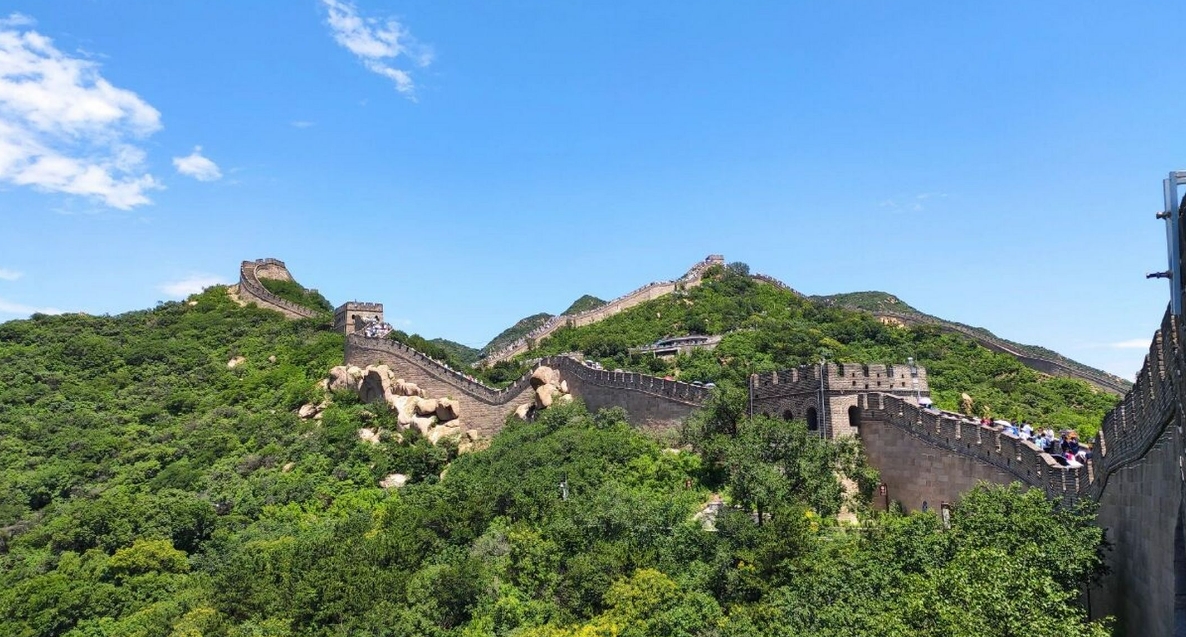
The Enduring Allure of the Great Wall: A Symbol of Protection, Unity, and Strength
The Great Wall of China, a UNESCO World Heritage Site and one of the New7Wonders of the World, continues to fascinate and attract millions of visitors each year. Its enduring allure lies not just in its awe-inspiring scale and grandeur, but also in its profound historical and cultural significance. The Great Wall is much more than just a physical structure; it is a powerful symbol of protection, unity, and the enduring strength of the Chinese spirit.
1. A Guardian of Trade and Prosperity:
The Great Wall played a crucial role in securing China's economic development and cultural progress by safeguarding vital trade routes, most notably the legendary Silk Road. This network of interconnected routes, stretching thousands of miles across challenging terrain, facilitated the exchange of goods, ideas, and cultures between the East and West for centuries.
-
Protecting Valuable Trade: Stretching along China's northern frontier, the wall acted as a formidable barrier against invading armies and nomadic tribes seeking to disrupt the flow of valuable goods, such as silk, porcelain, tea, and spices. This protection allowed merchants to travel and trade with relative safety, fueling economic growth and prosperity within China's borders.
-
Facilitating Cultural Exchange: Beyond its economic importance, the Silk Road also served as a conduit for cultural exchange. Buddhism, for example, traveled eastward along the Silk Road, finding fertile ground in China and profoundly influencing its art, philosophy, and architecture. The Great Wall, by ensuring the safety of this cultural artery, indirectly contributed to the richness and diversity of Chinese civilization.
2. A Testament to National Unity:
The Great Wall stands as a powerful symbol of the unification of China as a country, embodying the collective effort and shared identity of its people. Its construction, spanning centuries and involving countless laborers from different regions and backgrounds, transcended geographical and cultural differences, forging a shared sense of purpose and national pride.
- Uniting Diverse Regions: Before the first unified empire, China existed as a collection of often warring states. The construction of the Great Wall, initiated by the Qin dynasty to consolidate their newly unified empire, required a monumental effort of coordination and cooperation between these previously divided regions.
- A Symbol of Shared Heritage: The sheer scale of the Great Wall and the immense human cost involved in its construction left an indelible mark on the Chinese psyche. It became a symbol of shared history and national identity, reminding future generations of the strength and resilience inherent in unity.
3. An Enduring Legacy of Strength and History:
Perhaps the most captivating aspect of the Great Wall is its sheer age and enduring presence. Standing for over two thousand years, it has witnessed the rise and fall of dynasties, endured the ravages of time and conflict, and emerged as a testament to the strength and resilience of the Chinese spirit.
- Architectural Marvel: The Great Wall's impressive scale, ingenious design, and use of local materials reflect the advanced engineering and construction techniques of ancient China. The fact that this monumental structure, built with rudimentary tools and technology, has survived for millennia is a testament to the skill and ingenuity of its builders.
- Inspiration for Future Generations: Beyond its physical presence, the Great Wall has become an integral part of China's cultural identity. It serves as a constant reminder of the nation's rich history, the strength found in unity, and the enduring spirit of its people.
In conclusion, the Great Wall of China is far more than just a physical barrier. It is a profound symbol of protection, unity, and enduring strength. Its legacy continues to inspire awe and wonder in visitors from all corners of the globe, offering a glimpse into the rich tapestry of Chinese history, culture, and national identity.
Q&A:
Q1: How did the Great Wall contribute to cultural exchange in ancient China?
A1: The Great Wall protected vital trade routes like the Silk Road, which facilitated not just trade but also the exchange of ideas and cultures. This allowed for the spread of Buddhism into China, significantly influencing its culture and arts.
Q2: What makes the Great Wall a symbol of national unity?
A2: The construction of the Great Wall required immense collaboration between different regions of China, transcending geographical and cultural differences. It became a symbol of shared heritage and the strength achieved through unity.
Q3: Why is the Great Wall considered an architectural marvel?
A3: Built over two thousand years ago with rudimentary tools, the Great Wall's impressive scale and ingenious design showcase the advanced engineering and construction techniques of ancient China. Its enduring presence is a testament to the builders' skill and ingenuity.
note: This return of all, without the author's permission, may not be reproduced